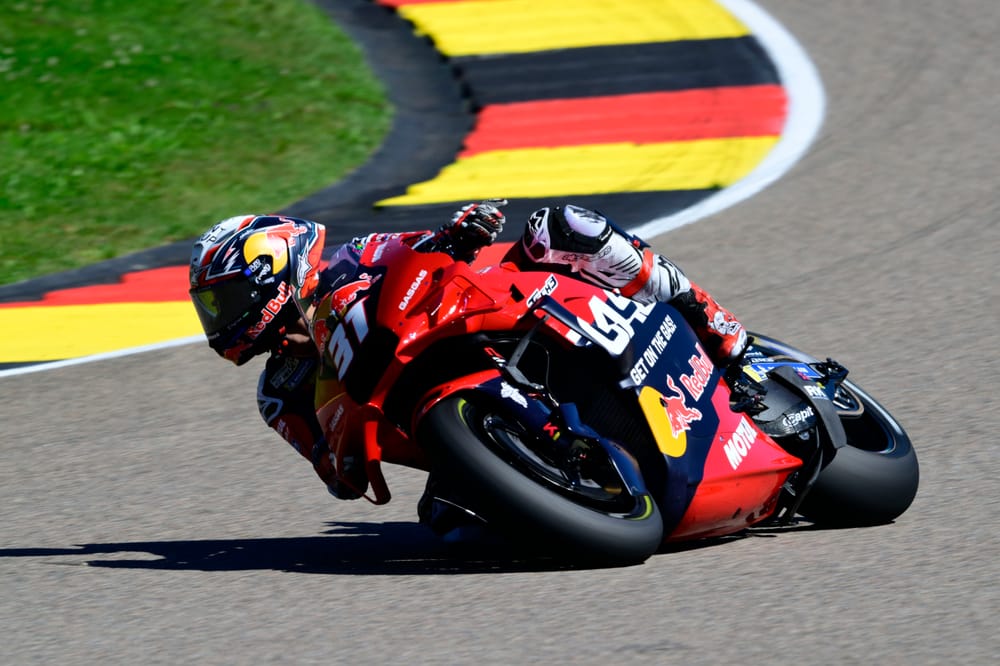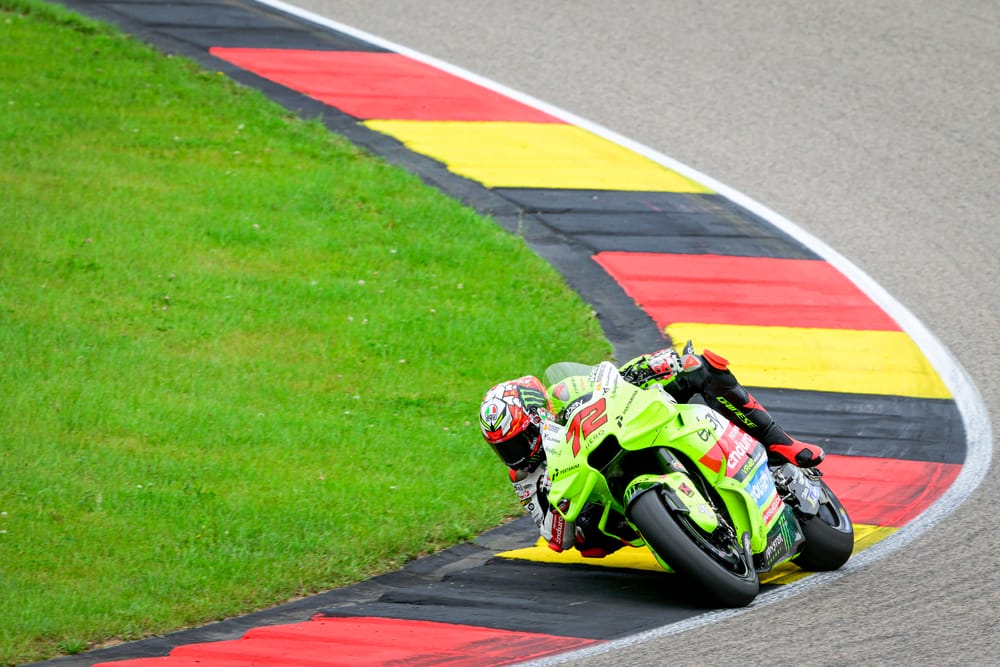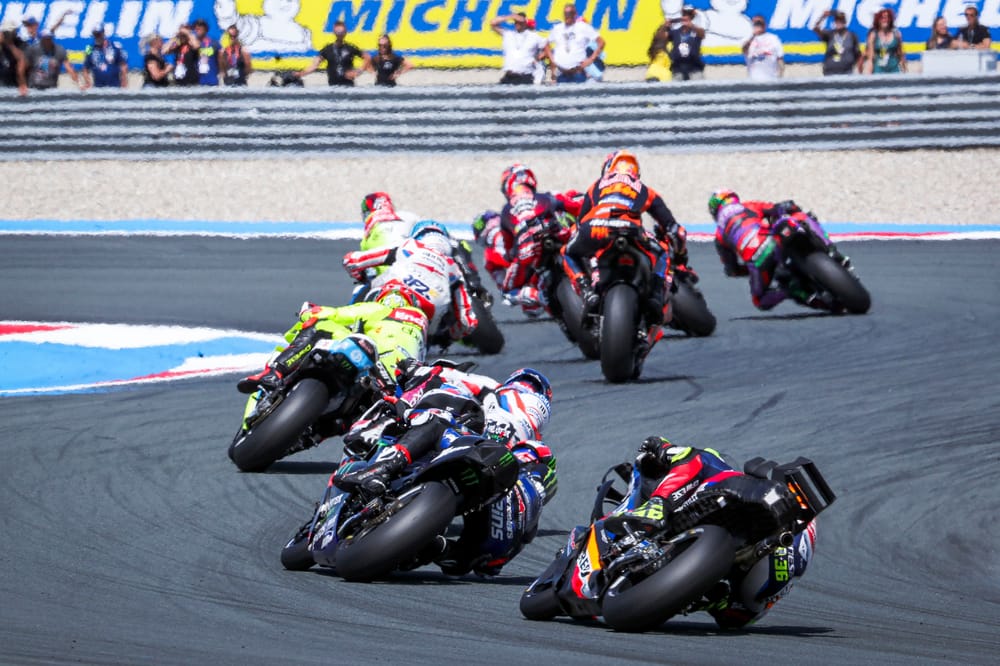The instant impact provided by Pedro Acosta is still very much a game changer for KTM's MotoGP programme - but, increasingly, it is also a welcome distraction from the RC16's sagging performance levels.
Acosta, in his public proclamations, has largely fixated on the mistakes he'd made in his first half-season as a MotoGP rider - describing it bluntly as "not enough" when asked to assess it - but inevitably the kinks will be ironed out sooner or later and his attention will switch to the machinery.
And the evidence is strong that that machinery has taken a step back, or at least stayed put relative to an opposition increasingly finding its groove. In the constructors' championship, KTM's worst-scoring weekend from the first four rounds (19 pts) still brought it more points than even the best of the five that followed (11 pts). At Assen and the Sachsenring, the RC16s were a non-factor.
One explanation could be that Acosta is the cause here - that, having started the season so well he has slipped back and thus KTM's standards have slipped with him because he has been the standard-bearer. But Brad Binder and Jack Miller have clearly taken a step back, too, in results but most glaringly in peak performance. Only Augusto Fernandez actually seems to be going the other way, given how badly his season had started.
Last year, the KTM was the only bike able to live with the Ducatis in the German Grand Prix at the Sachsenring. This year, it was Aprilia that KTM was trying to hang on to - with Ducati existing in an entirely different postcode.
Has it been an unkind run of tracks, perhaps? "No," insisted Miller. "We need to develop more. Simple as that.
"We're on the same package- in terms of base stuff, we're on the same stuff as Misano last year. We need to develop more, we need to work more, simple as that."
The Misano reference is, specifically, to do with the carbon fibre chassis, which had a spectacular public debut in tester Dani Pedrosa's hands at the San Marino Grand Prix and was quickly rubberstamped for use by the works riders, too.
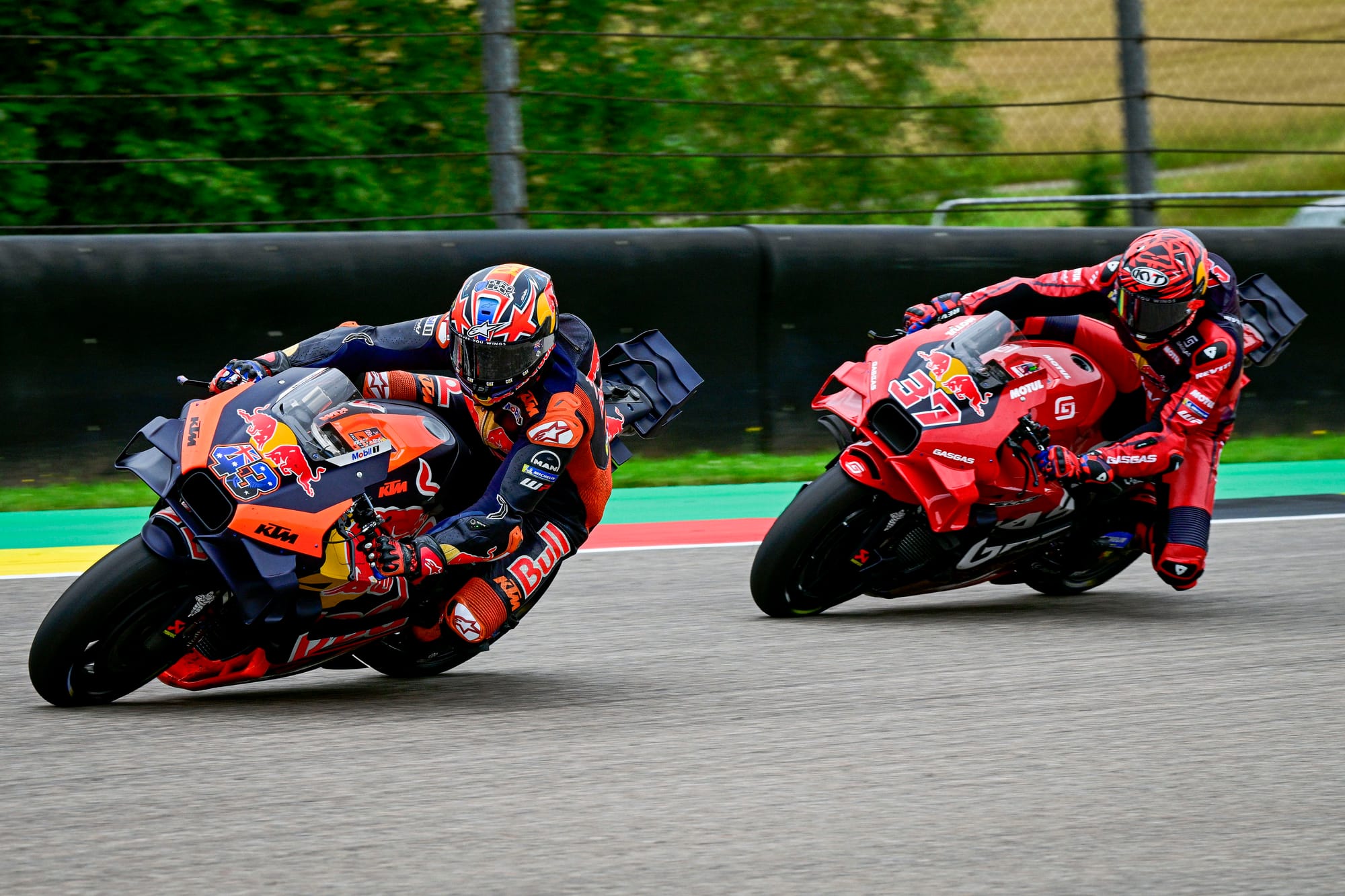
"We're still on the very first model of the carbon fibre chassis, we haven't touched anything there," Miller said.
"So I think something needs to be done, either there or even the swingarm length, we're maxed out in the back end of the bike. So... for sure we need to keep trying to develop it."
It is surprising to hear of under-development from a works KTM rider, given the firm's reputation not-too-long ago for bringing so much to try that riders hinted at disorientation.
KTM seemed keen to consciously move away from that in favour of consolidation, to the point where you have to wonder whether it has over-corrected - although Miller "wouldn't say" that.
"We haven't had an update for a long time, for sure," agreed Binder, but for him too it wasn't a question of an overly-conservative development approach.
"I think more than anything we need a clear understanding of which direction to go in," he insisted instead.
It's a vague answer - but it's one that makes sense in the wider context of Binder and KTM's season. For a stretch there, it felt like there was a different theory being floated as to what was really holding the RC16 back - the new-for-2024 Pirelli rubber being laid down en masse by Moto2 before Sunday's MotoGP race was one such idea (as Binder felt grip counter-intuitively peaked on Fridays), while the new Michelin rear and the fact KTM wasn't exploiting it as well as others was another.
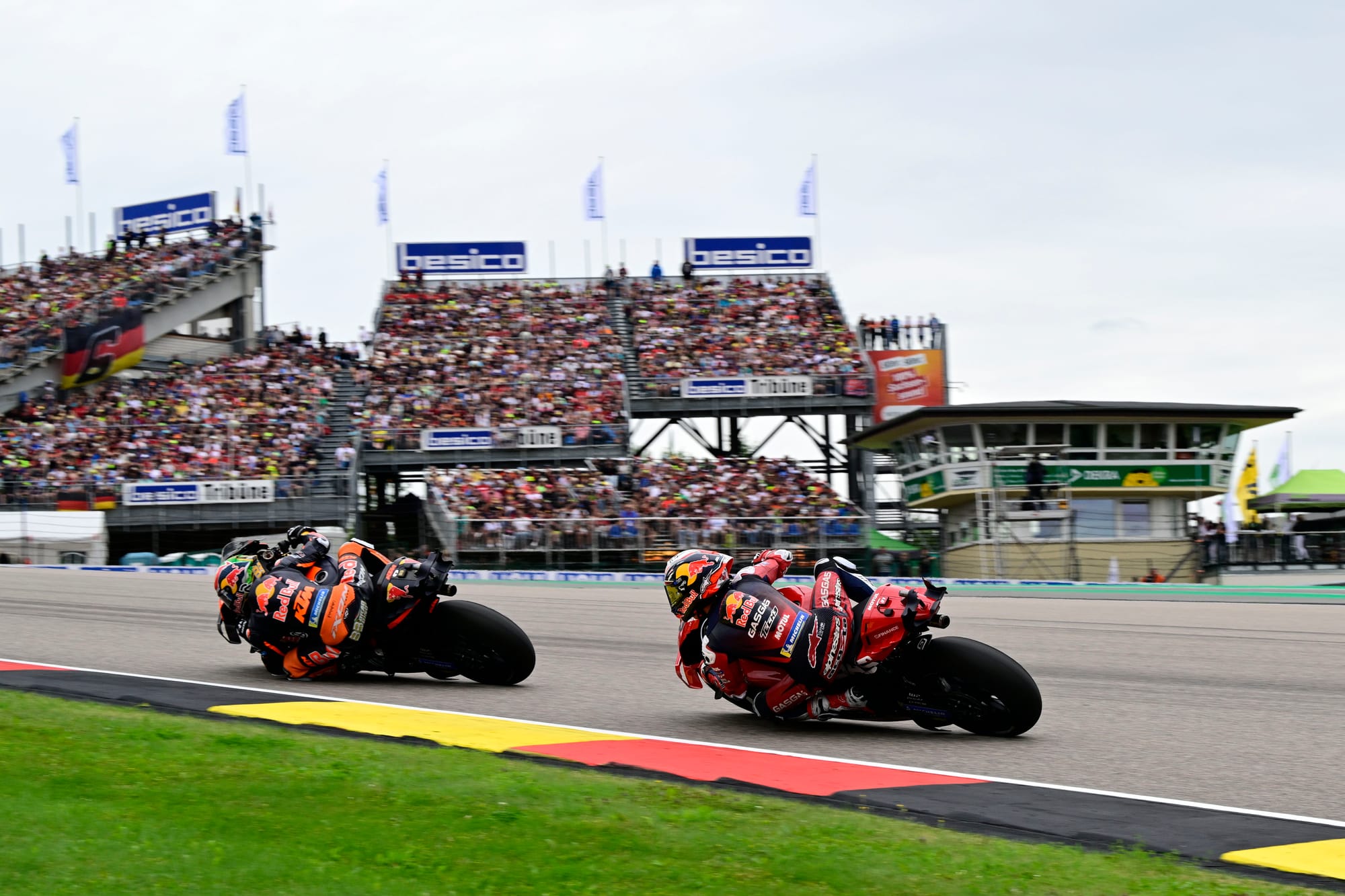
There was also rear vibration, reported by all four regulars but really at various points.
"We've been playing a lot with the balances this weekend," Binder said of his German GP, "and finally we did things that we've never done before, which don't really make sense - and it makes the bike a bit better. "So, clearly we need to understand things a little bit better, then they can bring the parts to help us."
The RC16 has a potent engine. It's good on the brakes, which has been a shortcut to results when combined with it being great off the line - because even when the pace wasn't there riders have been able to just grit their teeth and hang on to a spot by being impossible to overtake.
Miller reckons it's aerodynamically sound, too. And yet, in his words, it still needs "a bit of everything", which translates to more grip and more turning - which, in a way, is indeed everything.
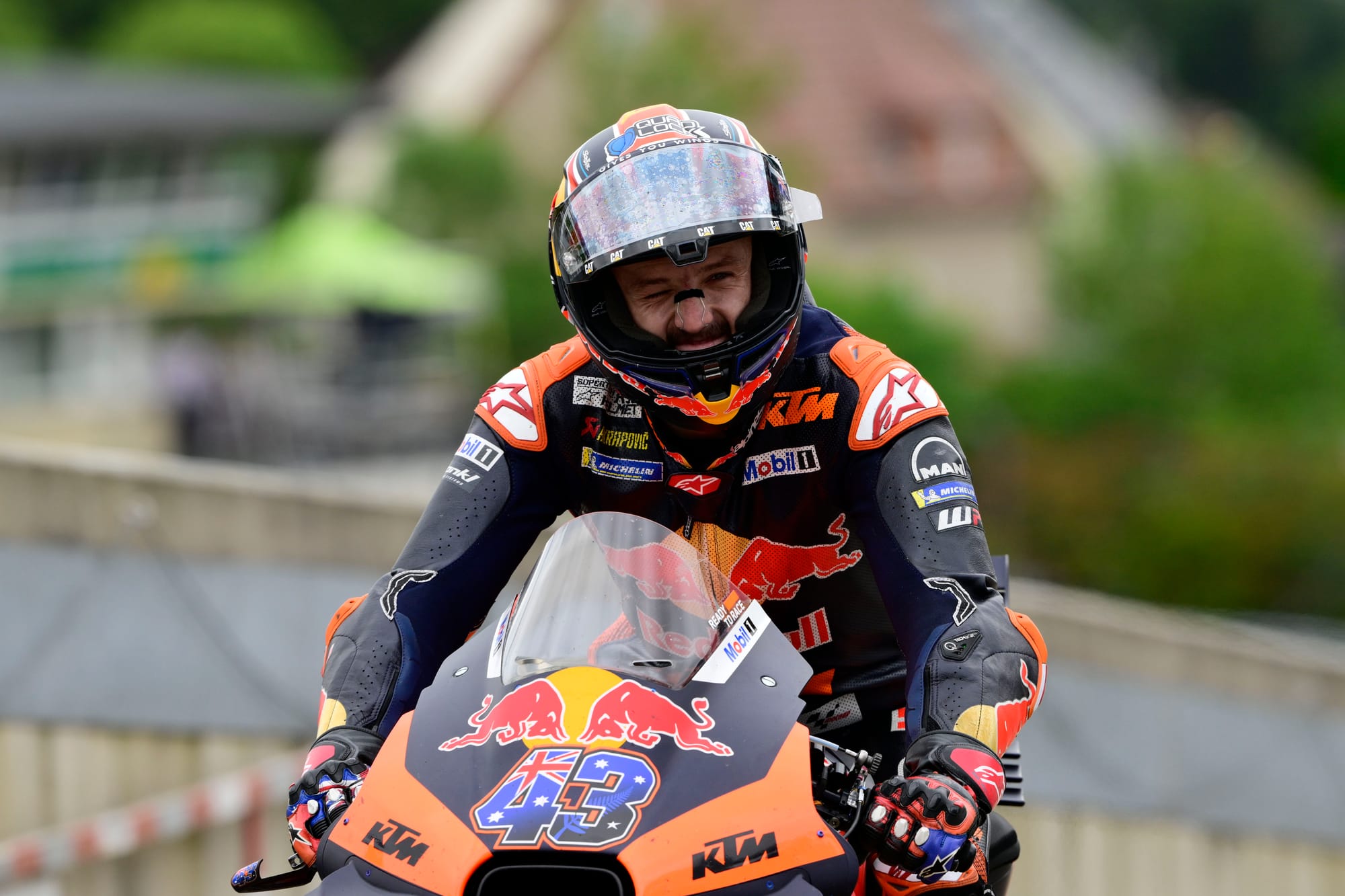
"Just a matter of working out what we need to do to get a bit more turning, a bit more grip. Both on the front and rear. Go faster, brake later, get on the gas earlier, hopefully carry more corner speed - it's like that, innit?" he laughed.
It's always a compromise, and KTM sounds like it hasn't been finding the right compromise. Those early-season rear grip-sapping vibration issues made way at the Sachsenring (logically given the high grip level) for understeer, potentially induced by the over-powered rear pushing the front.
Both Binder and Miller found ways to mitigate that issue in Germany, but it came at the expense of other things.
All that, though, wouldn't be such a drama if the bike was running up front. It isn't, in anyone's hands, even if it's probably better than the one-two punch of Assen and the Sachsenring has suggested.
For a manufacturer that is likely to have a title challenge-ready rider on its hands in 2025 in the ascendant Acosta, even a bike that occasionally snipes wins and podiums isn't really enough. Right now, the RC16 isn't even doing that.

